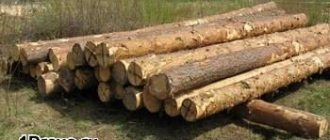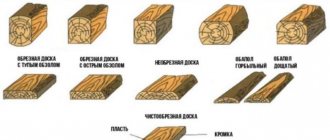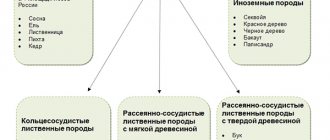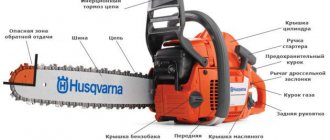Forests have always played a prominent role in the life of the peoples of Russia, constituting one of the foundations of material well-being. And today, one of the oldest industries in the country, the forestry industry, regularly supplies lumber and products made from wood to the market.
Structure of the timber industry complex
During its development, the forestry industry has absorbed four areas of activity:
- Deforestation and development of wood according to standard assortments.
- Woodworking is a series of technological processes of mechanical and chemical properties, intended for the production of lumber and finished products in the form of furniture and building materials.
- Paper and pulp production producing:
- paper,
- cardboard,
- roofing materials,
- varnishes,
- wood fiber and particle boards,
- cellulose.
It is based on the chemical processing of wood.
- Forest chemicals offering consumers:
- charcoal,
- tannins,
- rosin,
- acids,
- polysaccharides,
- turpentine.
World crisis of 2008-2009
It had a very negative impact on the Russian economy. This is confirmed by statistical calculations, according to which production in various areas suffered significant losses. The woodworking industry also found itself in a rather difficult situation. There was a wave of layoffs at many factories and plants, leaving thousands of employees without jobs. Due to the crisis in European countries, timber exports have decreased significantly. As a result, a large number of warehouses were overloaded with unclaimed goods. In the wood processing industry of the Russian Federation, production volumes have decreased.
Raw materials resources of Russia
Our country has a quarter of the world's forest reserves, covering almost half of its territory. The area of exploitable forests in Russia is estimated at 156 million hectares.
Timber industry complex
The largest forest reserves are concentrated in the European north, Siberia, and the Far East. There are very few resources north and south of the central forest zone, which have been subject to very intensive development in the past. The southern regions are noteworthy in this regard, with the exception of the mountainous regions of the Caucasus, where the level of tree vegetation has fallen below the natural background. Steppes and tundra, due to their natural characteristics, have practically no forests.
Currently, intensive logging activities are carried out in the following areas:
- Amur, Arkhangelsk, Irkutsk, Kirov, Kostroma, Perm, Tomsk regions;
- Krasnoyarsk and Khabarovsk territories;
- in the Komi Republic.
Mechanical processing of wood
In mechanical processing, sawmilling and the production of building materials are distinguished: prefabricated wooden houses, plywood, fiberboard, chipboard, furniture production.
Rosstat informs that by 2016, compared to 2010, plywood production increased by 2.5 times. Russia is in 4th position in plywood exports. The total production volume consists of 3 equal parts:
- ;
- 2nd echelon plants with a production capacity of more than 100 thousand m3;
- small enterprises.
Sawmilling is carried out on the basis of logging areas.
In recent years, softwood lumber has been especially in demand. In 2022, their production and export - 28 million m3, increased by more than 10%.
The main part of plywood production and the production of fiberboard and chipboard is located at:
The Urals are the only economically developed region that has large forest resources and conducts large-scale logging operations;
- Volga Federal District;
- Central Federal District;
- European North.
An important factor in the location of mechanical processing production is the availability of qualified labor, which is why furniture factories are mainly located in large cities.
The production of matches from aspen raw materials is traditional for the Russian Federation, but recently it has been sharply declining due to unprofitability, competition with lighters and old equipment.
Matches are produced in:
- Tomsk;
- Blagoveshchensk;
- Kaluga;
- Bashkiria;
- Rybinsk;
- Altai region.
Branches of the forest industry and factors of their location
Logging
In the past, seasonal work intended for cutting down trees for firewood and logs has now become a major industry, equipped with high-performance mobile equipment and qualified personnel. Today the logging industry includes:
- Chopping.
- Cutting, accompanied by the collection of associated raw materials and materials (resin and tar).
- River rafting.
- Transshipment of products from one type of transport to another.
- Use of low-grade wood and production waste.
At the end of 2022, wood production in the country as a whole amounted to:
- 127.8 million m3 – business (industrial);
- 13.3 million m3 – wood (fuel).
This is one and a half times less than the peak figures of the 80s of the last century. Today, the area of forests that can be cut down annually without causing natural damage is 550 million m3. A simple calculation shows that at best only 25-30% of Russian forest potential is used.
Logging industry
The domestic logging industry has reached this level only by consistently increasing production volumes over the past 20 years in the regions:
- North of the European part. It is here that a significant number of logging roads are concentrated, there are a number of rafting rivers, and the large seaports of Arkhangelsk and Murmansk are located. In addition, the region is located relatively close to the most developed regions of Russia and European countries.
- East Siberian region. The southern part of the Irkutsk region and Krasnoyarsk Territory uses: the Yenisei for rafting timber to the Igarsk port for export, and the Trans-Siberian Railway for transporting it to the European part of the country.
- Ural. One of the largest economic centers harvests about 20% of Russian timber, using it for its own needs and transporting it to other areas.
- Far East. Possessing significant reserves of both mature (the age of the species is 80-100 years) and overmature forests (more than 100 years); and being in close proximity to the economically promising countries of the Asia-Pacific region, the region has great opportunities to increase industry volume.
From the above analysis of the location of the main logging facilities, it is clear that the decisive factors for their location are the availability of a raw material base and a developed transport infrastructure.
Woodworking
One of the most labor-intensive industries of the forestry complex, products that are widely used. Using mechanical and chemical processing of wood, the industry produces:
- beams and slabs;
- materials and finished products for construction: plywood, boards, parquet, doors, frames;
- rough blanks and finished products for all types of transport;
- furniture;
- wooden cases and cases for products and tools;
- container;
- devices used in the textile industry;
- matches.
Woodworking technological processes are quite complex and multi-stage, which requires a high level of professional training and the availability of a large amount of equipment. Manufactured in the form of material cutting devices (sawmills and sawmills); drying chambers; processing machines; equipment for applying varnishes, enamels, paints; as well as a number of special-purpose and auxiliary installations. At the same time, the finished products themselves can be: mass, serial (large, small and medium), individual and exclusive production.
Wood industry
The decisive factors for the location of industry enterprises are:
- Providing energy resources and water.
- Availability of transport intersections (places of transshipment from one type of transport to another) and developed infrastructure.
- Sufficiency of qualified labor resources.
- Proximity to areas where finished products are consumed.
Pulp and paper
Currently, about 200 pulp and paper industry enterprises operate in Russia. The final products of their production are:
- Cellulose, which is the most valuable raw material for the light and food industries, perfumes and cosmetics, aircraft manufacturing and electronics.
- Paper for stationery, technical, household, sanitary and household purposes.
- Cardboard.
- Viscose.
- Process by-products in the form of: lignosulfonate, tall oil and furfural.
- Thermal insulation.
Technological processes in the pulp and paper industry are very expensive in terms of raw materials, electricity and water. Which, of course, affects the location of the relevant industries.
Pulp and paper
Logging
Timber harvesting amounts to more than 200 million m3 annually. Approximately 81% of all timber is harvested by tenants of forest plots, where the target plots are 78. About 5.8 thousand legal entities and individual entrepreneurs carry out logging on a lease basis, 1.4 thousand of which are located in the Volga Federal District. Less than 500 are located in the Far Eastern region. The Russian Federation ranks 6th among the world's countries in timber harvesting. Enterprises are located based on the raw material factor.
The following tenants operate in this segment:
- 26 very large, annually harvest more than 500 m3 and occupy 20% of the market;
- 261 large ones with annual procurement of 100 – 500 m3, 32% on the market;
- 1264 average, annual volume of wood, which is 20 - 100 thousand m3, market share - 32%;
- 4197 small ones, they harvest less than 20 thousand m3 and occupy 17% of the market.
Most large enterprises operate in the Northwestern Federal District and Siberian Federal District. In recent years, the growth of large and very large companies in this sub-industry has been planned.
The main markets are in Finland and China, as well as:
- Near East;
- Japan;
- European countries.
Development of the timber and wood processing industry
Russia, which is the world leader in timber reserves, is significantly inferior to its competitors in the production of timber products: the USA, Canada, Sweden, Finland, China, and Brazil. Annually harvesting 0.5 billion tons of forest biomass, our country manages to use only a quarter of it.
A significant part of substandard materials: branches, twigs, bark, pine needles is simply thrown away. More than half of exports are poorly processed raw materials. We are second to New Zealand in supplying round timber to the world market (14% of the world market volume) (16% of the volume).
It is clear that in these conditions, the domestic timber industry has enormous development prospects, allowing it to bring billions of dollars of profit to the state budget. A favorable factor for success in this much-needed business is the intensive development of China, which is focused on imported products in the industry. While our country's own needs are fully satisfied by the forestry industry.
The main reasons for hindering the development of the forestry and wood processing industries are:
- Extensive methods of using this type of biological resources, implying the cutting of wild trees.
- The lack of a sufficiently clear and demanding forest management policy, which leads to numerous fires, unauthorized logging, diseases and death of forests.
- Insufficient capital investment, causing physical wear and tear of equipment with its subsequent purchase abroad. This indicates an insufficient level of production of woodworking machines and mechanisms. The same factor forces manufacturers to limit themselves to an extremely low level of wood processing, generating low productivity and a high percentage of waste.
- Unattractiveness of investments.
However, despite all the difficulties, the industry has shown steady growth in logging over the past two decades. Which, together with the priority state policy reflected in the long-term development strategy, allows us to count on the successful solution of existing problems.
Furniture manufacturing
This sub-industry is characterized by high competition. Furniture production enterprises compete not only with well-known foreign brands, but also with shadow manufacturers. Because of this, the furniture market has not formed and is of an evaluative nature.
About 6 thousand manufacturers of various ranks are involved in the furniture industry. Products of the sub-industry are produced in 7 federal districts and 79 constituent entities. Large and medium-sized enterprises employ 6% of workers, producing 80% of the total volume of furniture in the country.
Leaders in furniture production:
- The Central Federal District produces 36.7% of furniture products;
- Volga Federal District – 30.7%;
- Northwestern Federal District – 9.2%;
- Siberian district – 7.8%.
Structure of furniture production in the Russian Federation:
- cabinet household furniture – 28%;
- soft – 20%
- kitchen – 16%
- office – 11%;
- mattresses – 9%;
- children's – 7%
- for sitting – 6%;
- other – 3%.
In 2022, furniture worth $294.1 million was exported from Russia.
Modern realities
Today there is an active development of the woodworking industry. This area is at one of the highest levels in the state economy. This is due to the fact that at all times of its existence this sector produced a large number of products that brought in a lot of income. Russia accounts for a quarter of the world's forest reserves. Stimulating the processing of raw materials at the state level will help accelerate the pace of progress in this sector. Today the task is to increase economic potential. Special attention is paid to the introduction of innovative technologies. It is planned to increase and improve the production process at the Selenga pulp and paper mill. Of no small importance is the use of the latest equipment, which allows us to use raw materials comprehensively and minimize costs. Adjustments are also planned for the structure of the sector. Combines and factories are faced with the task of more accelerated development.










